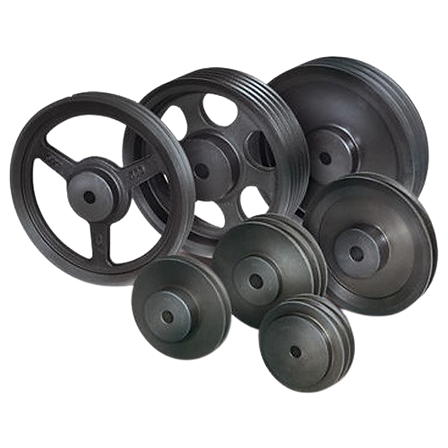
V-BELT
A v-belt is a flexible machine element used to transmit power between a set of grooved pulleys or sheaves. They are characterized as belts having a trapezium cross-section. V-belts are the most widely used belt drives since their geometry causes them to wedge tightly into the groove as the tension is increased. As the belt wedges into the groove, friction between the surface of the belt is increased, allowing high torques to be transmitted. The increased friction minimizes the loss of power through slippage.

TYPE OF V-BELT
V-belt comes in numerous variations, each of which offers unique characteristics that make them suitable for use in different applications.
How Do V-Belts Work?
The key components of a standard wrapped V-belt are as follows:
-
Base rubber compound. The rubber material forms the bulk of the V-belt and acts as a shock absorber during operations.
-
Tensile Members. Tensile members commonly referred to as "cords" are embedded in the rubber, giving the V-belt its strength and capability to transmit power.
-
Protective covering. The textile cover guarantees the right grip for power transmission and protects the rubber from frictional damage and external contaminants.
Altogether, these components allow wrapped V-belts to perform their function as intended—i.e., transmitting power and torque from one pulley to another by friction-based means.
V-BELT PULLEY
V-belt pulleys (also called vee belt sheaves) are devices that transmit power between axles by the use of a v-belt, a mechanical linkage with a trapezoidal cross-section. Together these devices offer a high-speed power transmission solution that is resistant to slipping and misalignment.
V-belt pulleys are solely used for transmitting power between two parallel axels. The most notable difference between a v-belt pulley and other types of pulleys (round belt, flat, etc.) would be the geometry of the groove or grooves located around the circumference of the pulley; these grooves guide and gain traction on a v-belt. The accompanying video offers a comprehensive overview of some v-belt basics, as well as their advantages and variations






